The move to digital marketing has become increasingly competitive for dental marketers and cosmetic marketers alike. We analysed dental and cosmetic marketing companies within our own database to bring you 17 statistics you need to know in 2023.
In a recent survey of over 200 marketers, we found that 37% found generating high-quality leads to be their biggest challenge. And when there’s a lack of visibility when it comes to lead quality, we’re not surprised.
Dental and cosmetic practices have to generate leads through conversions like phone calls, form submissions or live chat.
We found that 62% of marketers who use phone calls don’t know how to track them, and 53% of marketers who use live chat struggle to track it.
Measuring your conversion rate (both from website visitor to lead, and lead to sale) is important to help you assess how well your marketing efforts are working. Plus, getting your conversion rate means you can benchmark yourself against your competitors and yourself. With it, you can critically assess your marketing channels and optimise your outputs to drive more sales.
Are you trying to drive more high-quality leads for your cosmetic or dental practice? There are a few challenges likely in your way. From high competition to offline conversions, getting cut-through can be tricky.
Keep reading to find some helpful marketing statistics for the dental and cosmetic industry that might help your strategy.
If consumers aren’t already registered with a dental practice for example, then chances are they’ll only search for a local dentist as and when they need care. This highlights a key opportunity for paid search for the industry. In fact, we found that paid search drove 35% of traffic on average.
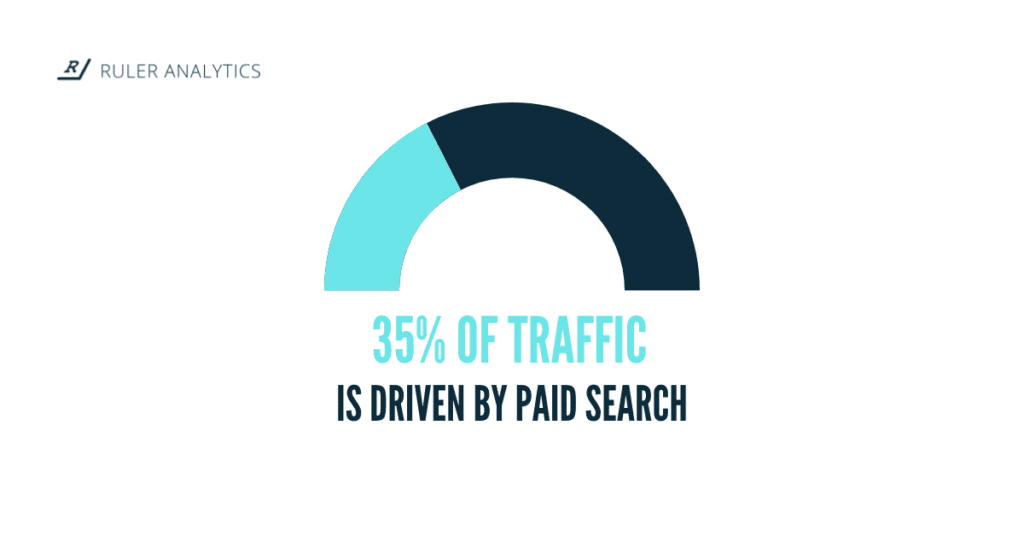
And the same is true for cosmetic practices. Potential customers will start their customer journey online, looking into potential procedures and reading up on costs and answering any other questions they may have.
As such, paid search is a great way to get front of mind for potential patients and drive traffic to your site. But remember, users don’t click and convert right away.
We found that referral as a channel had the highest conversion rate at 3.6%. Now, is this hardly surprising when we consider it? For dental and cosmetic work, users want to know they’re in good hands.
They’re often passing over large amounts of money for some procedures, so we’re not surprised they want to see existing customer feedback. So, be sure you can be found on review sites and local directories. You’ll be amazed by how much you can stand to gain from referral traffic.
Remember, tracking referral traffic can sometimes be complicated. So, ensure you’ve got attribution set up on your website so you can track every new lead and their source. It’ll help you accurately credit your marketing efforts for new patients.
Search is a fundamental part of visibility online. Being found on local searches, in particular, is key for cosmetic and dental practices, so it’s unsurprising to learn that organic made up 35% of traffic to practice websites.
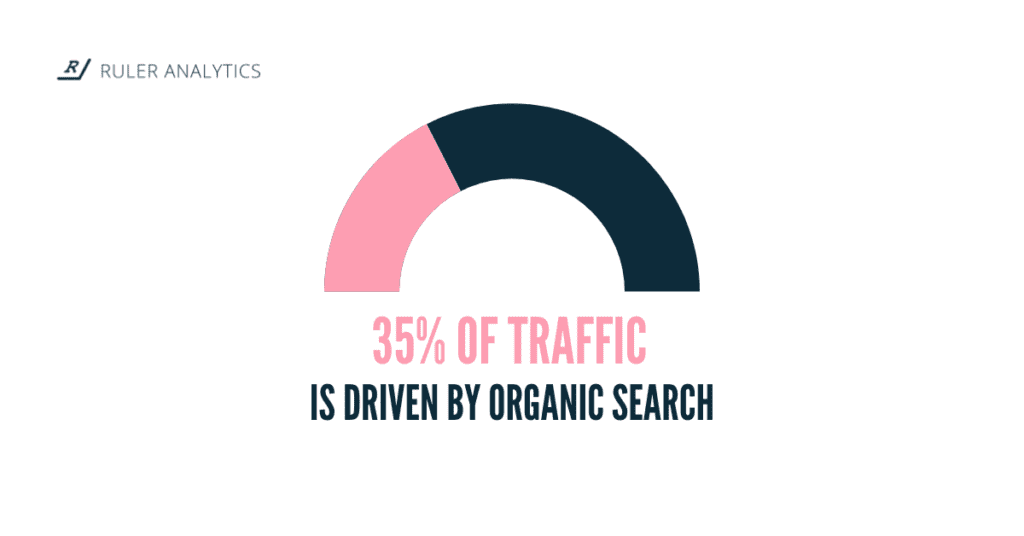
This could be used alongside paid search to ensure you’re hitting the top results in key search terms relating to your practice.
Remember, the key with organic is to be as informative and as helpful as possible. We also found organic strong when it came to conversions too. In fact, it was the second highest-performing channel converting at 3.5%.
Optimise your local listings and social media. And to drive conversions, let users engage with your business on their terms. Offer a phone number, email address, form or even live chat box for potential customers to contact you to help drive conversions.
Speaking of phone calls, we found that 68% of conversions occurred via call. While customers do like to begin their customer journeys online, they’ll often want to speak to someone to book an appointment.
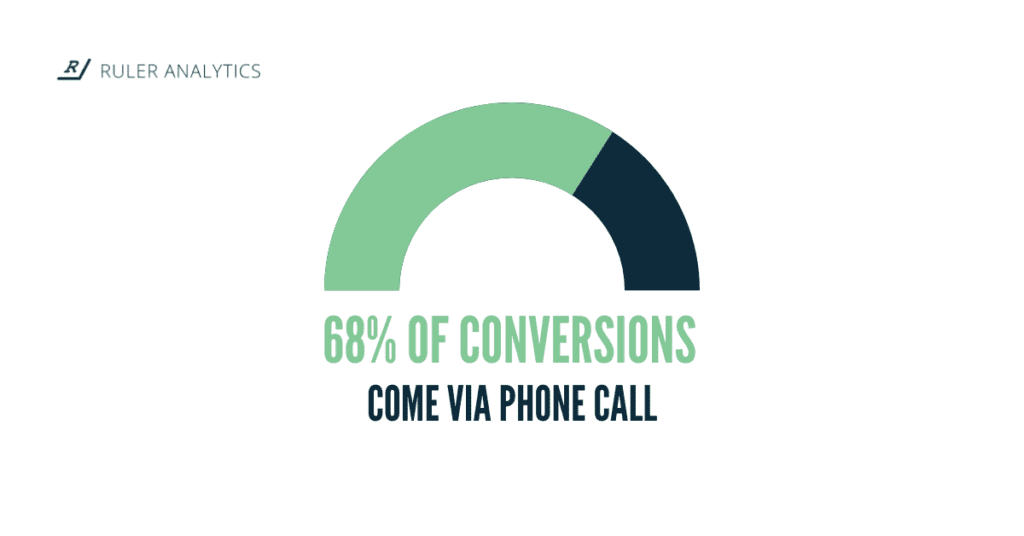
Given the likely need to share personal or sensitive information to make a booking, it’s clear that providing a phone number is key to driving conversions from your website.
Remember, you can track (and record) every call made to your business when you use Ruler’s marketing attribution software. Plus, you’ll be able to attribute it back to the influencing marketing channels, campaign and ad.
For the two highest converting channels, referral and organic search, calls were particularly prevalent. Similarly, for referrals, we found 64% of conversions happened via phone. But for organic search, this jumps up to 73%.
Cosmetic and dental practices rely on word of mouth marketing to get cut-through, making it highly competitive. Many marketers in the cosmetic and dental industry resort to investing their budget to drive web traffic.
However, due to the reliance on referral traffic, getting web traffic through paid alone isn’t enough. And, it might only start customer journeys meaning it’s difficult to track its true return on investment.
Regardless, you probably want to know how you compare to the industry average. We found that marketing teams in the cosmetic and dental industry averaged a 2.3% conversion rate. However, top performers in the industry had conversion rates of up to 23.1%.
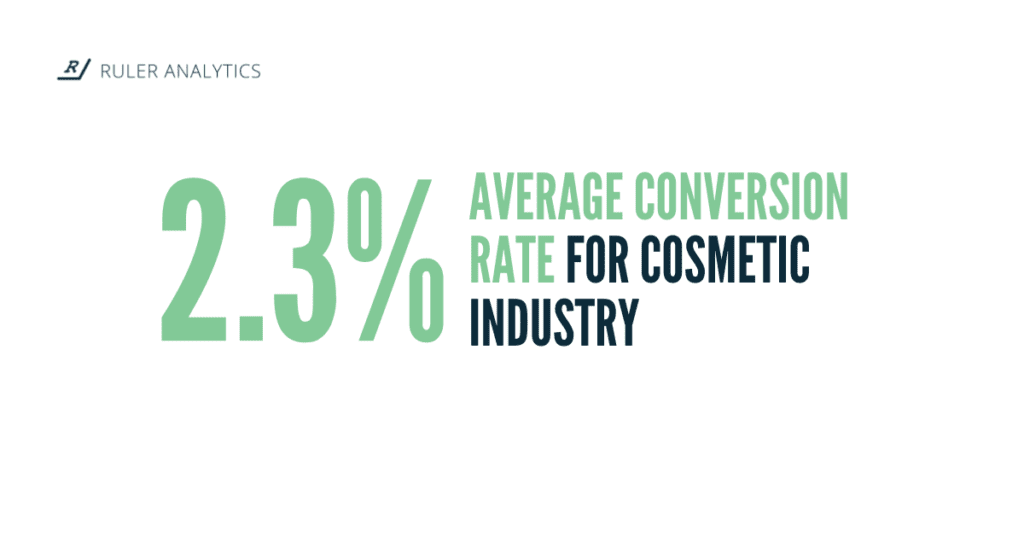
Chances are, you just want to know which marketing channels work best for driving meaningful conversions, right?
We get it. So, we’ve shared the average conversion rate across all our cosmetic and dental practice data so you can see which channel works hardest. From organic search and email to paid and referral, you can see which drives the most bang for your buck.
Coming in first is referral with a conversion rate of 3.6% followed closely by organic search at 3.5% (that’s across Google, Bing and Yahoo).
Next is direct at 2.7%, and then paid search at 1.9%.
After that is organic social at 1% followed by paid social at 0.2%.
But remember, these are industry averages. What might work well for other cosmetic and dental practices might not work best for you.
Understanding your conversion rate for leads is a great starting point when it comes to analysing and optimising your marketing outputs.
But remember, a lead doesn’t guarantee revenue. That lead might not ever turn into a booking.
However, you don’t have to feel like you’re in the dark with tracking revenue. We already support cosmetic and dental practices to their marketing by revenue.
We feed the lead and marketing data into your CRM so that you can better understand where your leads are coming from. And even better, when your lead closes into a patient (whether that takes months or years), Ruler will scrape the revenue from that user in your CRM and fire the data to your marketing apps. This will allow you to definitively report on your marketing’s success and prove ROI and ROAS. Find out more about how we can support you.
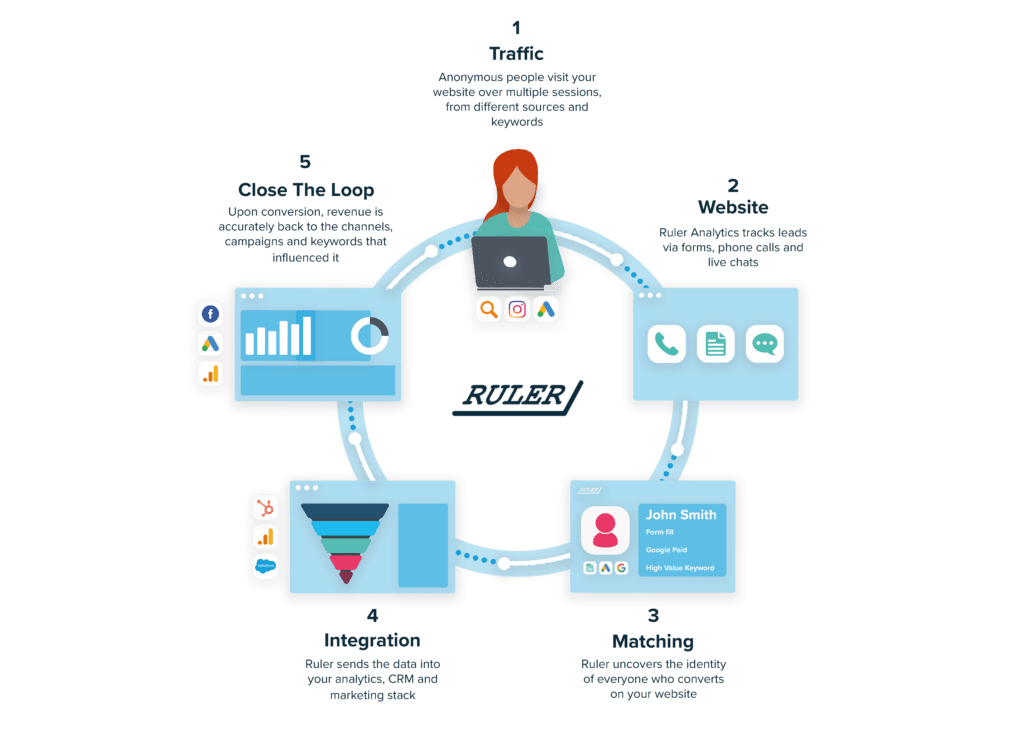
Get started with revenue attribution by booking a demo with our team. Or, find out more about your competitors by downloading our full Cosmetic and Dental Conversion Benchmark Report.
You’ll be able to see the full data on how your competitors are using their channels and how their web visitors are engaging and converting.
With this report you’ll be able to answer questions like:
You’ll be able to definitively prove what’s making the phone ring, and even better, what’s impacting your bottom line.